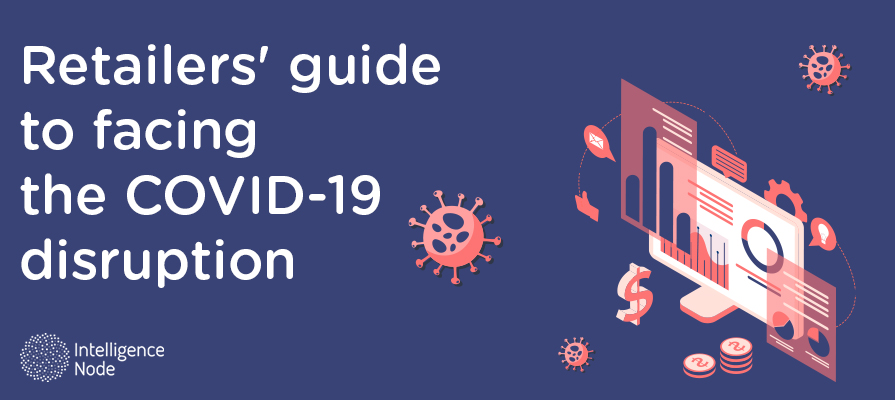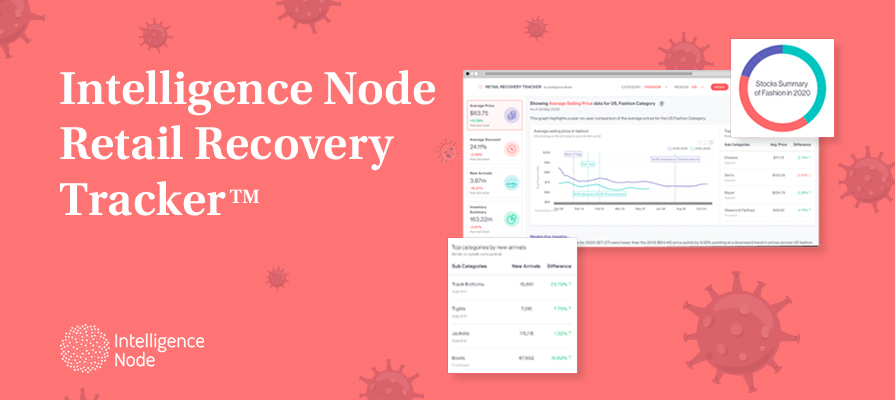It will be an understatement to state that the COVID-19 pandemic has created havoc. And the retail industry is getting hit especially hard. In North America, stores started closing this month and this trend is likely to continue as cities and states battle to contain the spread of the virus.
So far Nike, Nordstrom, Sephora, Urban Outfitters, and Apple have closed their stores and others are following suit. Just recently, Macy’s also announced a 2-week closure of its 551 Macy’s department stores, 34 Bloomingdale’s locations, 19 Bloomingdale’s outlets, and 171 Bluemercury shops – an impact that is affecting 130,000 employees. And, according to Coresight Research, store closures for 2020 could double last year’s record of more than 9,300.
Meanwhile, while the apparel, electronics, and home decor sectors are getting hit hard by store closures, the demand for particular products, like the elusive toilet paper and hand sanitizer, has skyrocketed in recent months leading to supply shortages in many markets.
The unexpected future of COVID-19 and its impact has everyone worried. But retailers can adapt to these challenging times by adopting new approaches and looking to technology for help.
What Retailers Can Do To Stay Competitive
First, retailers need to recognize the consumer buying behavior is rapidly changing because of the uncertainty. For example, Neilsen’s research has revealed six consumer behavior levels related to COVID-19’s impact globally – starting with level 1- proactive health-minded buying, then moving to level 2- reactive health management, and finally going to level 3 – pantry preparations. Most of the world has passed these stages.
Levels 4 and 5 include “quarantine living preparations” and “restricted living” behaviors, with the final stage, level 6, being a return to normal ways of living. While the behavior patterns for levels 4, 5 and 6 are still emerging it is clear that this pandemic is driving consumers to behave very differently, namely, driving them to use technology to buy their products and groceries online. So what can retailers do to stay competitive now?
First, Communicate Proactively with your Customers
Now more than ever, communication is vital between retailers and their customers. First, customers want to know they are safe so tell them what you are doing to maintain safety standards for your stores and your employees. Your customers want to know that you are taking care of your people. Next, despite this outbreak, customers will expect timely delivery of products, but if you cannot deliver in the normal time period, explain why.
Retailers need to focus on transparent communication and concisely relaying their message to ensure they don’t lose their customers. Retailers need to focus on providing information timely so that customer expectations are managed.
Beyond actively communicating with your customers, be sensitive to the tone of voice with which you write your marketing programs. Be authentic, and sensitive. Now is not the time to be cracking COVID-19 jokes in your marketing campaigns.
Last, try to provide up-to-date high-value content on your website. For example, retailers can focus on creating a fresh website FAQ page that addresses concerns with regards to shipping practices and other measures are being taken during the shipping process to avoid virus transmission.
Swiftly Shift to E-commerce Focused Strategy
In 2019, online spending represented 16.0% of total retail sales for the year, according to a Digital Commerce 360 analysis of Commerce Department retail data. Amazon accounted for more than a third of all E-commerce in the United States. The same report also indicates that consumers spent $601.75 billion online with U.S. merchants in 2019, up 14.9% from $523.64 billion the prior year, according to the U.S. Department of Commerce.
And, a 2019 NPR study showed that 69%, or nearly seven in ten Americans, had purchased items online and that 92% of these online shoppers had bought an item through Amazon.
But the COVID-19 outbreak is driving almost all shoppers to experience online buying. As more shoppers are becoming health conscious they are avoiding store visits and instead of shopping for groceries and basic household supplies online. Amazon is hiring 100,000 employees as a result of this fast-moving shift to online buying. These market dynamics will help push the eCommerce market to grow very quickly in the coming months. There is already tough competition in eCommerce but the competition will get tougher now.
Competitor benchmarking and price benchmarking should be the top priorities if retailers want to compete and grow during these volatile times. Using plug and play solutions such as those provided by Intelligence Node will give retailers an edge as they will have access to analytics that helps them make bold decisions that are safe right away.
Review Your Inventory Management Systems
All major retailers are facing a sales slowdown and an impact on the inventory is inevitable. It is imperative for retailers to be in complete control of their inventory management to minimize the impact. An omnichannel strategy is a must to ensure movement in the stock levels. A centralized inventory management system and an ability to service eCommerce orders via in-store inventory are essential.
Product availability tracking is as important as price benchmarking. With so many products going out of stock, product availability, by itself, can become a major differentiator for any retailer. Retailers need to make sure that their websites are tailored to promote the in-stock products and to show the in-stock results first in response to search queries. It would help in creating the perception that the website will always have what the customer is looking for. If a retailer is able to service the customer and fulfill his needs in these troubled times, then he would have won the customer forever.
More importantly, the acquisition cost of customers can be significantly low, given that the customers don’t have many alternatives that they would otherwise have. With a captive customer base spending hours on their phones in self-quarantines, this is also a great opportunity for all retailers to clear out some of their excess stock from the holiday season if priced and promoted smartly.
Final Thoughts
While COVID-19 is definitely unprecedented adversity, it also presents a huge opportunity for retailers to win life-long customers. There are some key takeaways for retailers from this situation, which if implemented successfully in their business, will reap benefits much after the virus is long gone! These are:
- Proactive communication with customers is essential to demonstrate that you care for them beyond their monetary value.
- To rely on more productized and plug and play technology-based solutions over services and consultancy lead ones – specifically for critical matters like pricing and assortment optimization.
- E-commerce competitor benchmarking is more important than ever before as even the most traditional shoppers are leaning towards E-commerce.
- Smart inventory management and product availability tracking are as important as price benchmarking in gaining competitive differentiation.



